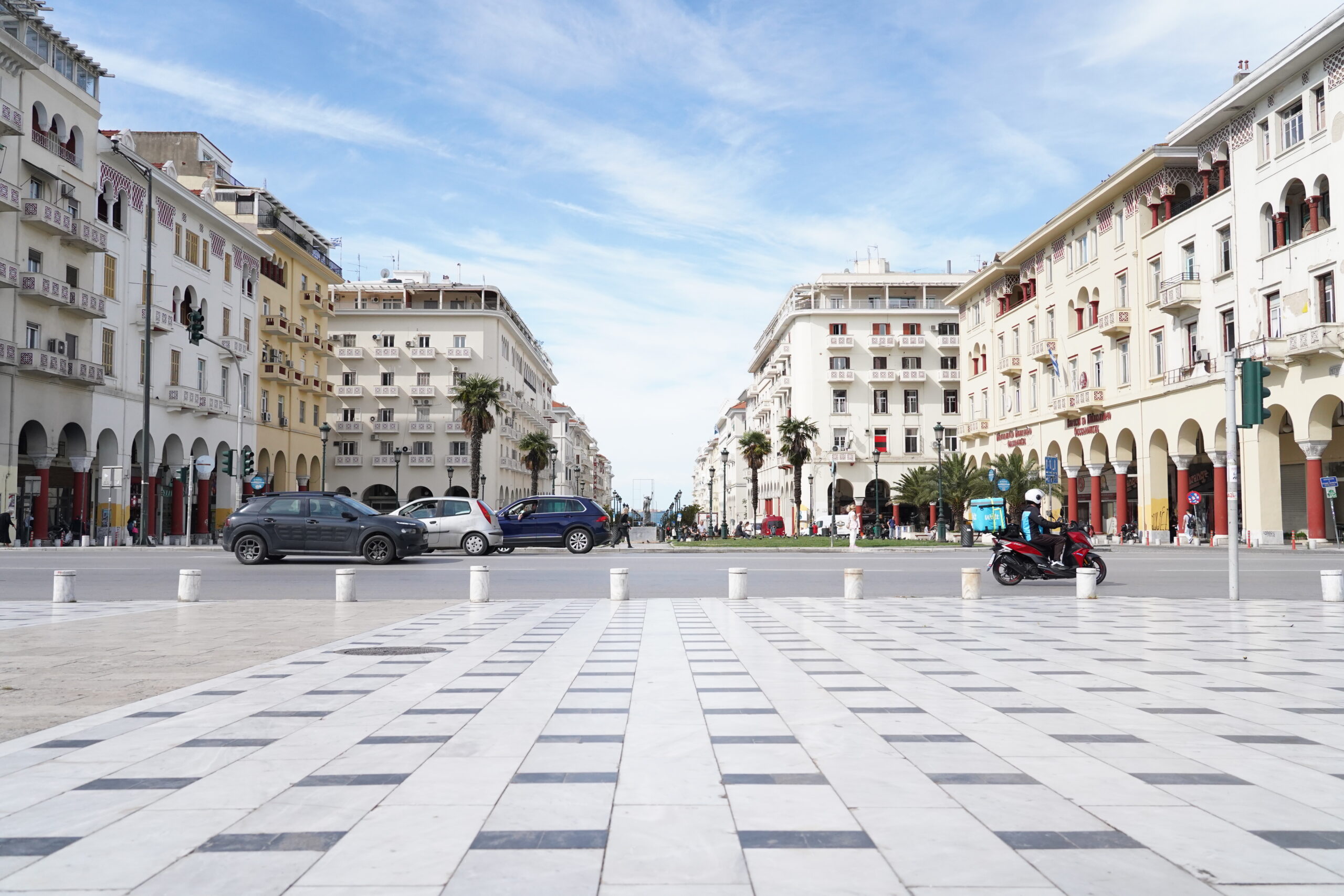The joy of just walking in Thessaloniki
Thessaloniki, Greece
The joy of just walking in Thessaloniki
Aristotelous Square, Thessaloniki’s main square
Thessaloniki, or Salonika as it was once called does not seduce at first glance. From the airport, you enter a city of warehouses and weathered mid-century apartment blocks, concrete and uninspiring. But look again, and Thessaloniki is a city that tells the story of not only Greece’s ancient history, but its more contemporary, often overlooked past.
I had been to Thessaloniki, two years earlier when I climbed Mt. Olympus which sits 70km to the west of the city. The brief snippets I saw of Thessaloniki’s diverse buildings, amazing gyros and the city’s mysterious history inspired me to come back and discover what I imagined was a vibrant party scene that came alive in the city’s abandoned buildings, sophisticated gastronomic experiences and rich cultural scene.
Unfortunately I was unable to discover this. The reason was simple: I was travelling alone. I have no problem travelling alone. In fact, I often prefer travelling alone because it means you don’t end up involved in arguments with fellow travellers about the itinerary and petty squabbles about splitting the bill for a panini and a Diet Coke. At the grand old age of thirty-two however, as confident as I am I decided I didn’t particularly want to awkwardly sit sipping a beer amongst tables of twenty-one-year-olds.
Instead, I planned a jam-packed itinerary of Thessaloniki’s many museums and sites which document the many civilisations that have called the city home. This I had convinced myself would keep me busy throughout the trip and ensure I could properly understand the city.
On my first night I took the 20-minute bus journey from the airport to my hostel. The hostel, Zeus is Loose had a cute, vaguely ancient Greek theme. Other than the hostel’s theme, the main thing that stood out to me was the hostel’s perfect location overlooking the central park in what appears to be a converted mid 20 century office building. Its bar on the top floor is also a perfect place to sit with a beer or cocktail and watch the sunset. After my first night, I can also wholeheartedly recommend the gyros in the main square. Normally local Greek food is best sampled in the far away suburbs in a hole in the wall taverna. Thessaloniki’s best gyros however can be found in the smack bang in the city centre. The pork gyros was perfectly balanced with crisp salad and generous portions of tzatziki and mustard and was a great welcome to my home for the next three days.
The first morning I planned to go to the Byzantine museum. Thessaloniki has a wealth of excellent museums and my top picks are the Archaeological Museum and the Jewish museum. Both museums I discovered are excellently curated and take the visitor on a fascinating journey through the city’s history. Back to the Byzantine museum, I decided to walk the 20 minutes from the hostel to the museum located amongst the university buildings just outside the main city. The museum visit turned out to be much shorter than anticipated because half of the museum was closed off due to staff shortages. By this point I was slightly disappointed spending 8 euros for not much to see and instead of taking the city’s new metro, I decided to veer from my original itinerary and take a long walk around the city.
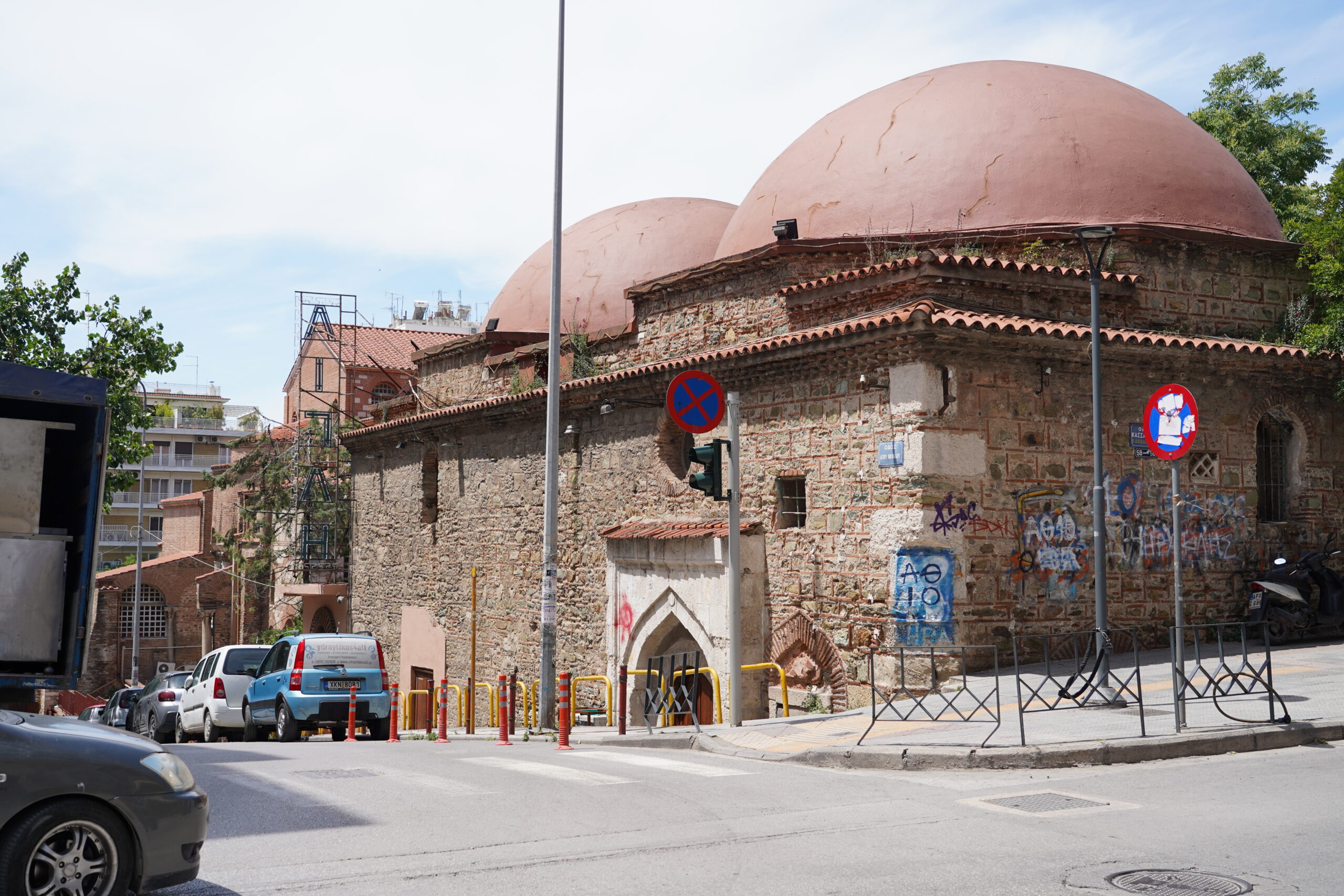 The distinctive clay coloured domes of the Yeni Hamam (Ottoman bath house)
The distinctive clay coloured domes of the Yeni Hamam (Ottoman bath house)
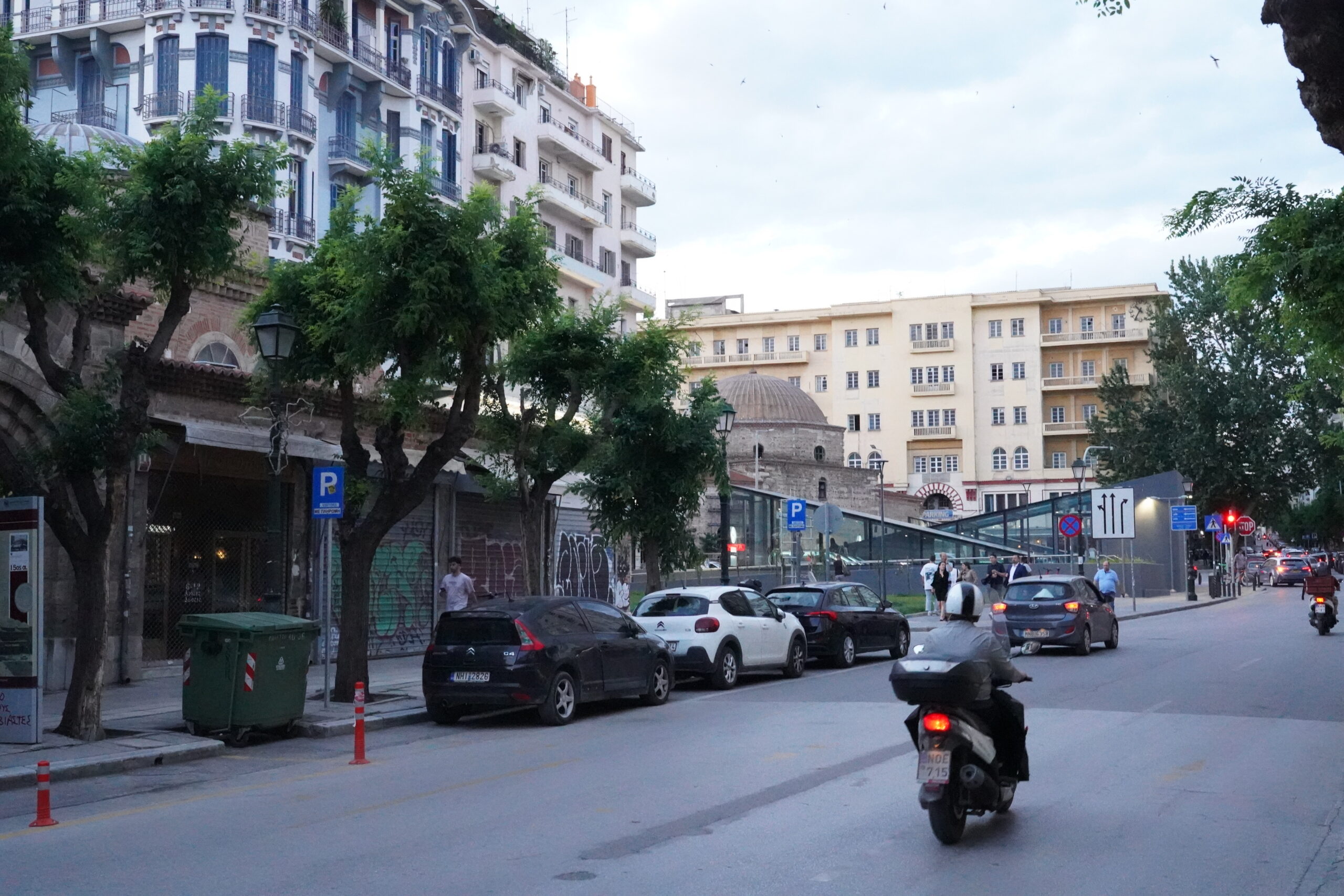 Ancient and more contemporary history is easily stumbled upon exploring the city’s streets
Ancient and more contemporary history is easily stumbled upon exploring the city’s streets
Thessaloniki’s elegant centre is characterised by a grid system which makes navigating very easy. Its streets are bustling with bakeries, clothes shops and cafes. Every so often the rows of apartment blocks give way to domed Orthodox churches or ancient ruins and excavation sites. After stopping for a coffee, the barista told me even the city’s new metro was repeatedly delayed because of engineers discovering, amongst other things, a byzantine road under a planned metro station. Whilst on the metro and admiring the expertly preserved ruins which stand right next to many of the central metro stations, it occurred to me the best way to understand the city was simply by walking around and admiring the many pieces of history that sit in between the non-descript apartment buildings.
Thanks to Mark Mazower’s book, ‘Salonica City of Ghosts’ I had a basic understanding of the city’s history. The now very Hellenic feeling city was until it was captured by the Kingdom of Greece during the First Balkan War in 1912 an Ottoman city, and before that a Byzantine city. Thanks to the 1922 population exchanges between Greece and the Ottoman Empire and the tragedy of the Holocaust, the city was emptied of its Muslim and Jewish inhabitants and the city now feels very much Greek.
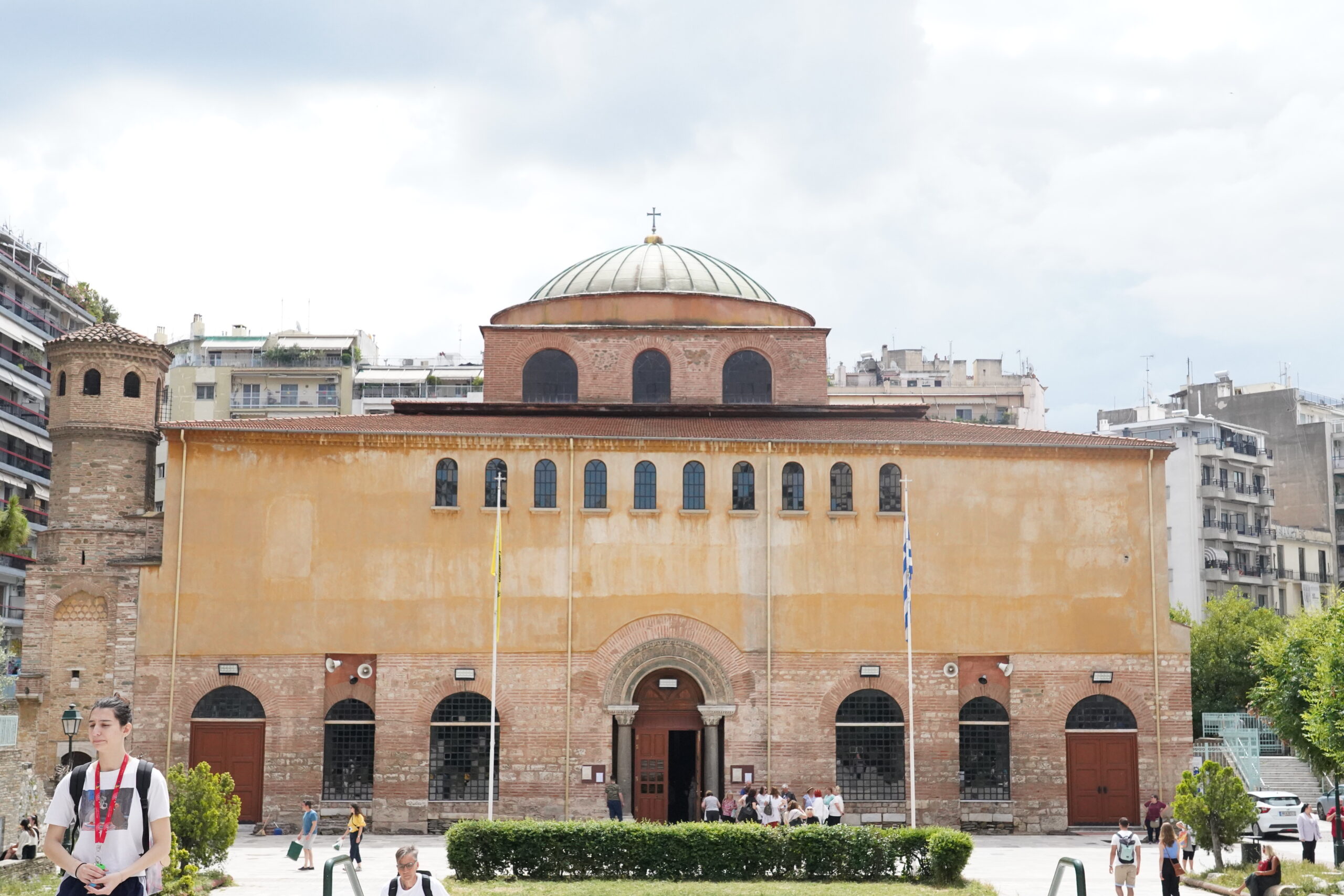 The imposing Hagia Sophia
The imposing Hagia Sophia
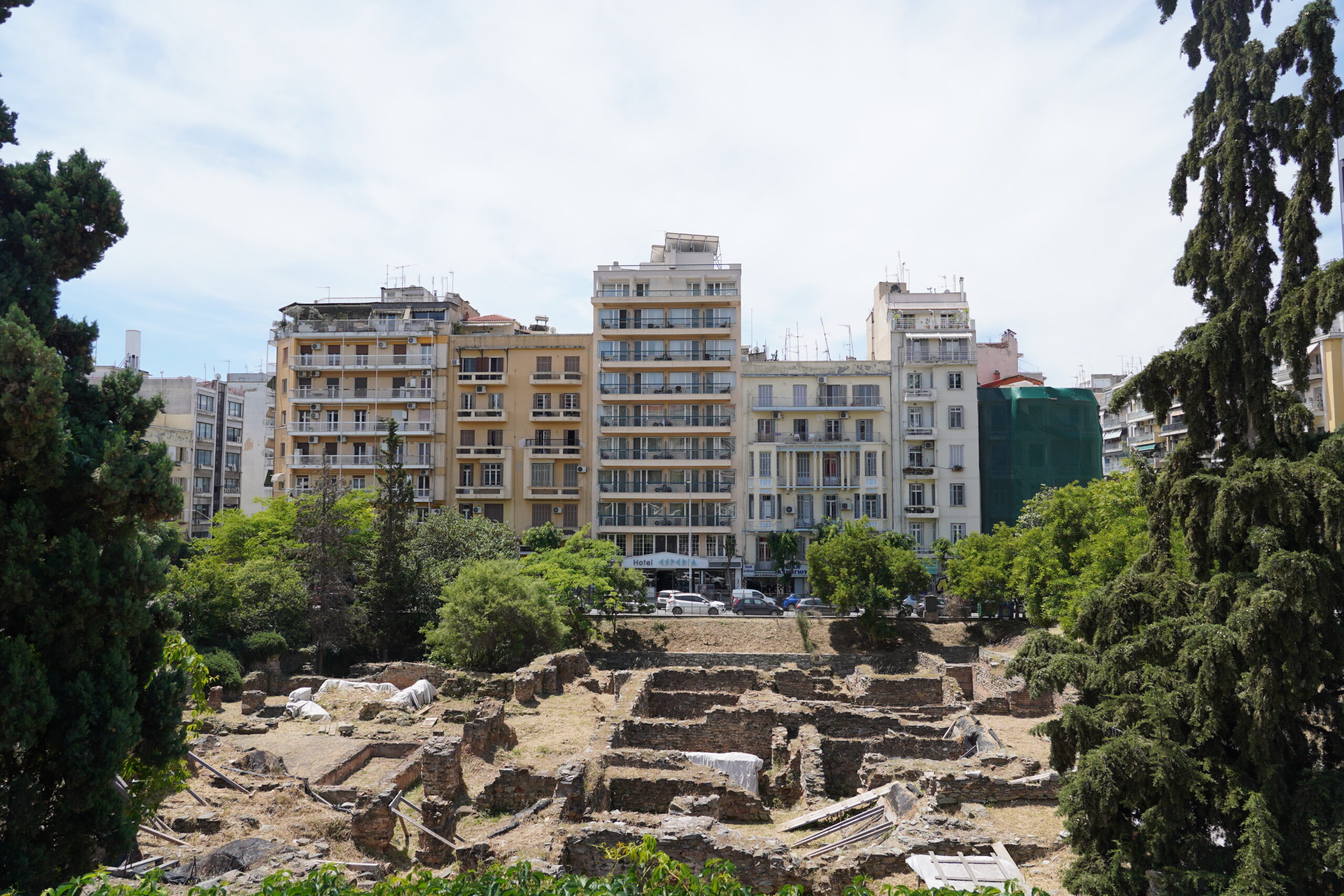 Thessaloniki’s myriad cultural history intersects in its streets
Thessaloniki’s myriad cultural history intersects in its streets
What about the traces of its former inhabitants whose city was largely destroyed in a fire in 1917? My question was answered after an excellent lunch at a Greek canteen when I came across an abandoned, red bricked building which on closer inspection had Islamic style arches at its back. It was one of the few remaining mosques of Islamic Thessaloniki, the Aladja Imaret mosque which now sits amongst residential buildings and is unused. I wondered what happened to the mosque’s minarets which would have been the first sight a visitor would have glimpsed of the prosperous city amongst fertile land. According to Mozower’s book they were destroyed in 1925 as part of an extensive effort to Hellenize the city. This is also the case for the majestic Aya Sofia cathedral in the city centre which was reconverted to its original Christian state in 1912.
In the afternoon I wanted some sea breeze, so I headed for the seaside and the promenade by the sea. The promenade was full of runners and people enjoying the open air and landscaped gardens. By this time I had long forgotten my intended itinerary. I had discovered more about the city’s history and convivial atmosphere simply by walking around than any museum would have allowed me to. Breathing in the sea air I realised how calm and relaxed I was simply admiring the city. I learnt later there is a new term for exactly what I was doing: ‘land snorkelling’. Coined by Montana artists, Clyde Aspevig and Carol Guzman land snorkelling is all about paying attention to where you are not necessarily where you’re going.
Is Thessaloniki any better than any other European city for directionless yet inquisitive wandering? Its wealth of ancient Greek, Byzantine, Ottoman, 20th century architecture would lead me to think so. I was not the only one with this thought, an American on a fishing trip from North Carolina back at the hostel told me he too believed it was one of the most walkable cities he has been to. Its brand new, inexpensive metro system has made visiting different parts of the city even easier.
It is not only the many layers of history on offer that make walking around Thessaloniki so pleasurable. The city’s shops and food scene appear to be thriving. The numerous bakeries’ sweets and foil covered chocolates shine out at you like jewels from faded art deco buildings and entice a hungry traveller inside to sample its treasures. The city also hosts a vibrant night life whose early twentieth century buildings provide a perfect backdrop to eclectic clubs and bars.
On my last day in Thessaloniki and having long ago abandoned my original travel itinerary in favour of discovering Thessaloniki through wandering its orange tree lines streets, I thought back to the idea of ‘land snorkelling’. Rather than rigid travel plans, the best way to appreciate Thessaloniki’s myriad history is by stumbling across abandoned villas of Jewish and Muslim merchants, domed Ottoman buildings and twinkling chocolate wrappers peering out from art deco shop fronts.


